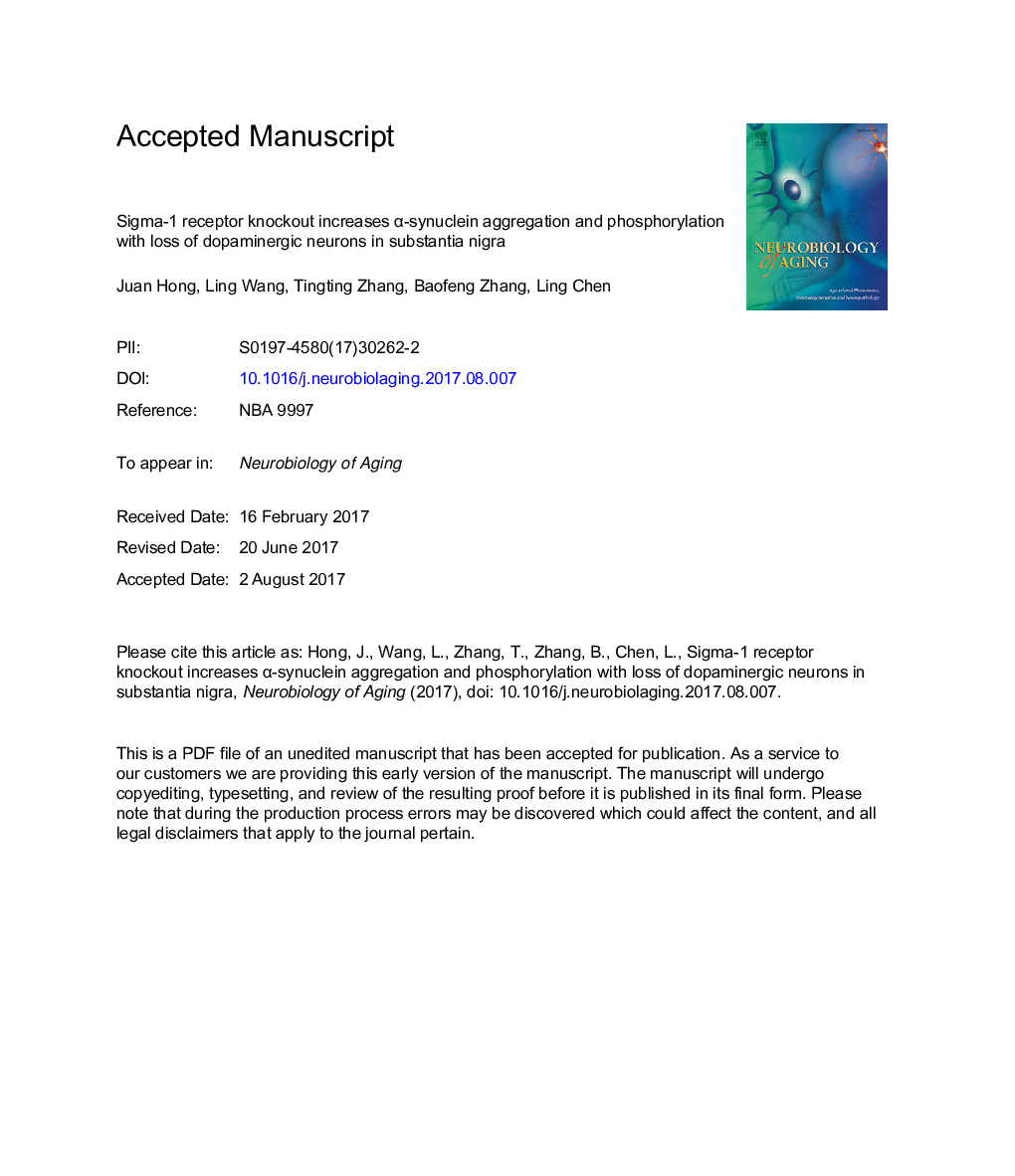| Article ID | Journal | Published Year | Pages | File Type |
|---|---|---|---|---|
| 4932589 | Neurobiology of Aging | 2017 | 44 Pages |
Abstract
Sigma-1 receptor (Ï1R) is expressed in dopaminergic neurons of substantia nigra. Here, we show that Ï1R knockout (Ï1Râ/â) mice, at age 6-12 months, appeared with age-related loss of dopaminergic neurons and decline of motor coordination. Levels of α-synuclein (αSyn) oligomers and fibrillar αSyn in substantia nigra of Ï1Râ/â mice were age-dependently increased without the changes in αSyn monomers. The phosphorylation of αSyn monomers or oligomers in dopaminergic neurons was enhanced in Ï1Râ/â mice. Levels of phosphorylated eIF2a and C/EBP homologous protein expression were elevated in Ï1Râ/â mice with decline of proteasome activity. Inhibition of endoplasmic reticulum stress by salubrinal recovered the αSyn phosphorylation and proteasome activity and prevented early oligomerization of αSyn in Ï1Râ/â mice. Rifampicin reduced the late increase of αSyn oligomers in Ï1Râ/â mice. Rifampicin or salubrinal could reduce the loss of dopaminergic neurons in Ï1Râ/â mice and improved their motor coordination. The results indicate that the Ï1R deficiency through enhanced aggregation and phosphorylation of αSyn causes the loss of dopaminergic neurons leading to the decline of motor coordination.
Related Topics
Life Sciences
Biochemistry, Genetics and Molecular Biology
Ageing
Authors
Juan Hong, Ling Wang, Tingting Zhang, Baofeng Zhang, Ling Chen,
